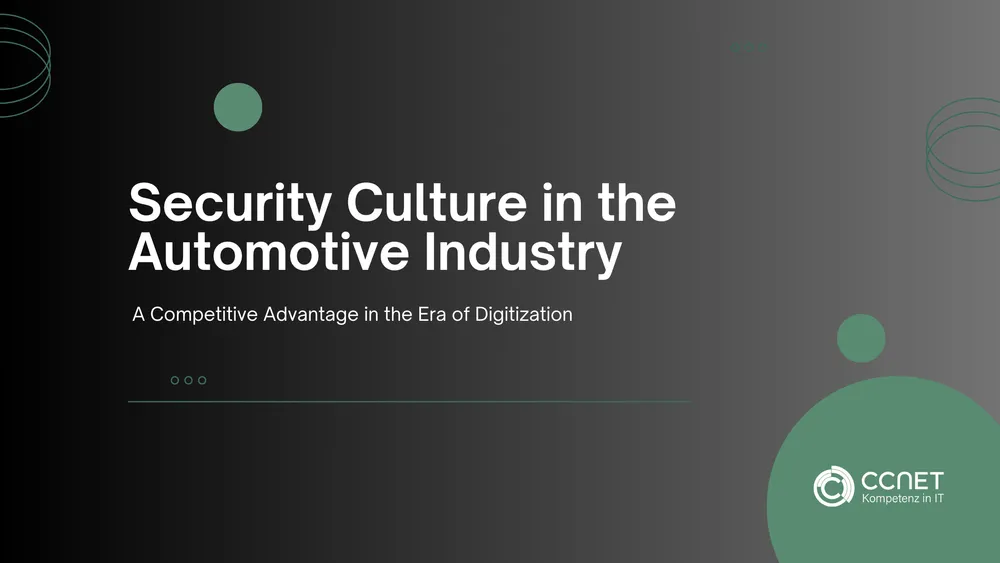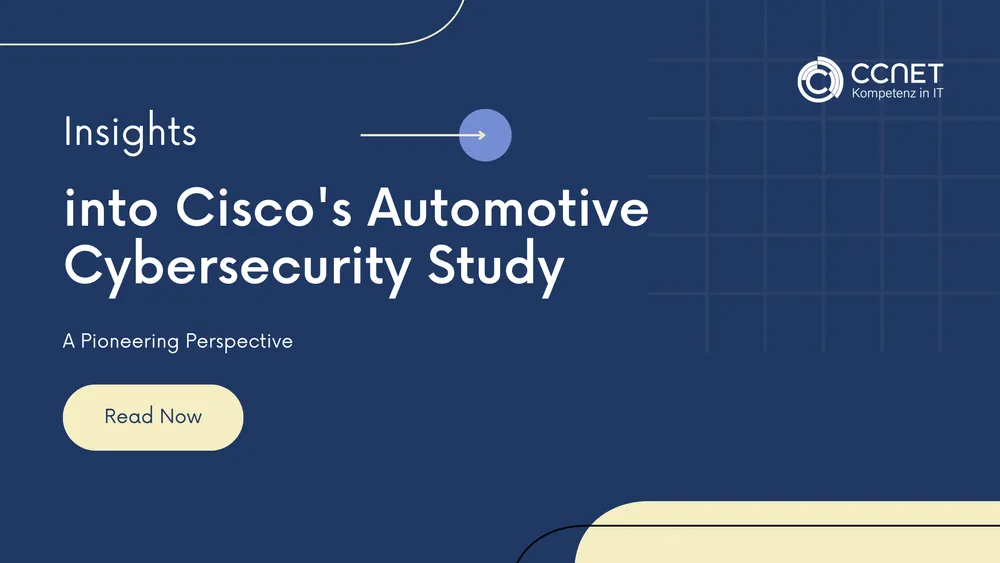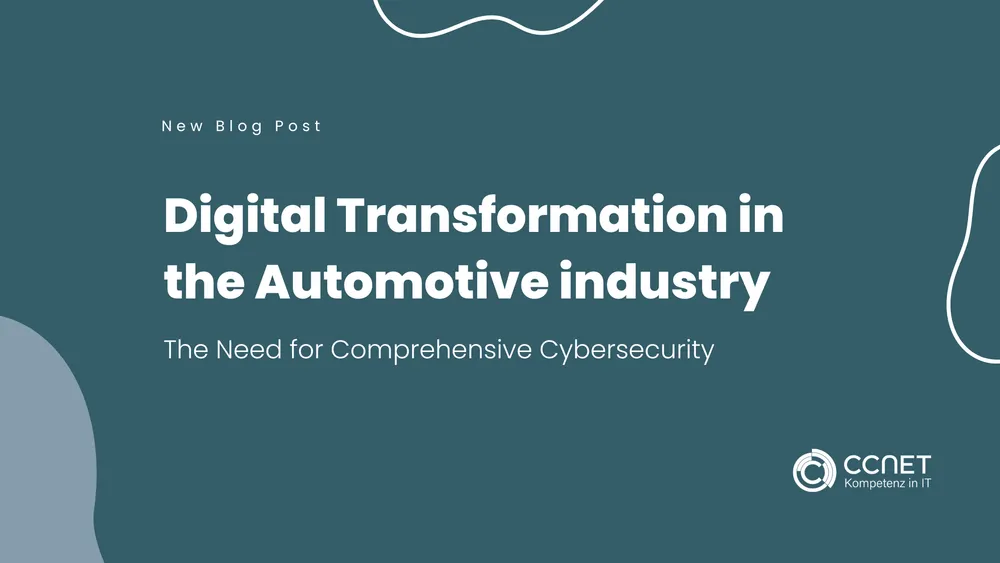
CCNet
Aug 23, 2024 • 3 min read

Future of Automotive Cybersecurity: Shaping a Safer, Connected Mobility
The automotive industry is currently undergoing a revolutionary transformation, driven by advancements in digital technology and the increasing trend toward connected vehicles. This evolution not only brings comfort and efficiency to users but also presents new challenges regarding cybersecurity. Cisco's recent Automotive Cybersecurity Study sheds light on this issue and emphasizes the urgency of integrating cybersecurity as a fundamental building block of automotive development. In this blog post, we take a look at the future of automotive cybersecurity and discuss how we can shape a safer, connected mobility.
Innovation and Security Go Hand in Hand
The future of the automotive industry is inseparably linked to the progress of digital technologies. From autonomous vehicles to electric drives and personalized user experiences through connected services, the possibilities seem endless. However, with each new technology comes cyber threats accompanying these innovations. Integrating cybersecurity into the development process is therefore not an optional step but a necessity to unlock the full potential of digital transformation in the automotive industry.
The Role of Cybersecurity in the Automotive Sector
The automotive industry faces the challenge of protecting vehicles not only against physical but also virtual threats. Cybersecurity plays a crucial role in ensuring the integrity and confidentiality of vehicle data as well as protecting the physical safety of vehicle occupants. With the increasing connectivity of vehicles, security measures need to be developed to ensure both data privacy and vehicle safety.
Cross-Industry Collaboration for a Secure Future
One key strategy for addressing cybersecurity challenges in the automotive industry is cross-industry collaboration. Manufacturers, suppliers, technology companies, and regulatory authorities must work together to develop common standards and best practices for automotive cybersecurity. This collaboration enables a holistic approach to risk mitigation and ensures that security solutions can be seamlessly integrated into vehicle architecture.
Education and Awareness as Key Elements
Another important aspect of strengthening cybersecurity in the automotive industry is education and awareness. Both within companies and among end-users, a deep understanding of the importance of cybersecurity and associated risks needs to be created. Regular training and information campaigns can help sharpen security awareness and ensure that all stakeholders understand and apply best practices for data security.
Technological Advancements as Enablers of Cybersecurity
Technological advancements offer not only new attack surfaces for cybercriminals but also advanced solutions for cybersecurity. Artificial intelligence (AI) and machine learning, for example, can be used to detect anomalies in network traffic and identify potential cyber attacks early on. Developing robust encryption techniques and authentication methods is also crucial to ensuring data security and privacy protection.
Conclusion: The Future of Automotive Cybersecurity
The future of automotive cybersecurity requires a proactive and holistic approach that combines innovation with security. Through cross-industry collaboration, the development of standards, education, and technological advancements, we can lay the foundation for a safer, connected mobility. The automotive industry must see these challenges as an opportunity not only to increase security but also to strengthen user trust in the new generation of vehicles. Ultimately, the ability to effectively manage cybersecurity risks will be crucial to how quickly and successfully we can realize the vision of connected, autonomous, and sustainable mobility.
FAQ about Automotive Industrie
Why is cybersecurity so important in the automotive industry?
Because connected vehicles are increasingly the target of cyberattacks, and both vehicle data and the physical safety of occupants must be protected.
What risks do connected vehicles pose?
Digital connectivity allows attackers to access systems, manipulate data, or steal information, leading to significant security risks.
How can cybersecurity be integrated into vehicle development at an early stage?
By considering security measures as an integral part of the development process from the outset – not as an afterthought.
Why is cooperation within the industry crucial for cybersecurity?
Effective, uniform security solutions can only be established through common standards and cross-industry cooperation.
How does training contribute to improving automotive cybersecurity?
Regular training and education raise awareness among employees and users and promote the secure handling of vehicle data.
What role does AI play in automotive cybersecurity?
Artificial intelligence helps to detect suspicious behavior at an early stage and automatically ward off attacks.
What are the technological measures for protecting connected vehicles?
These include encryption, secure authentication procedures, and automated monitoring of network traffic.


